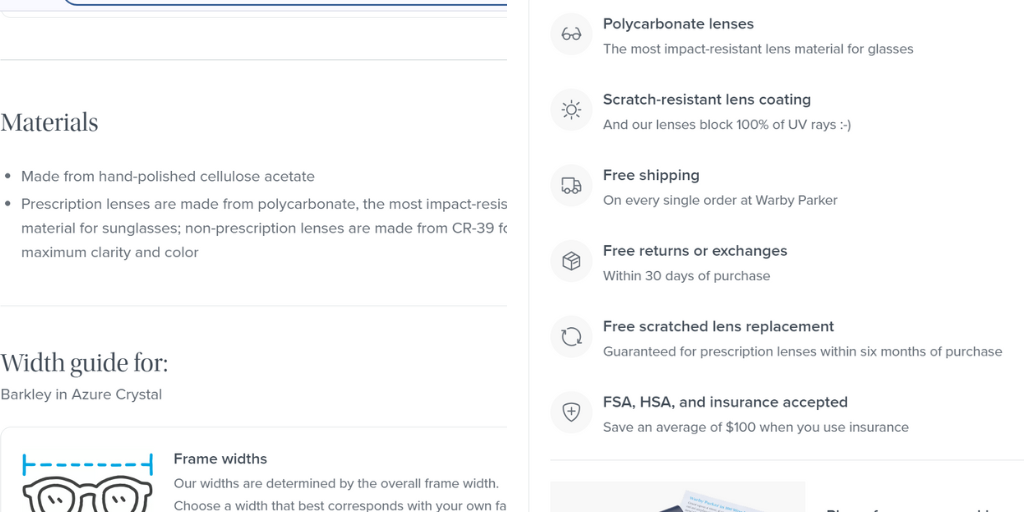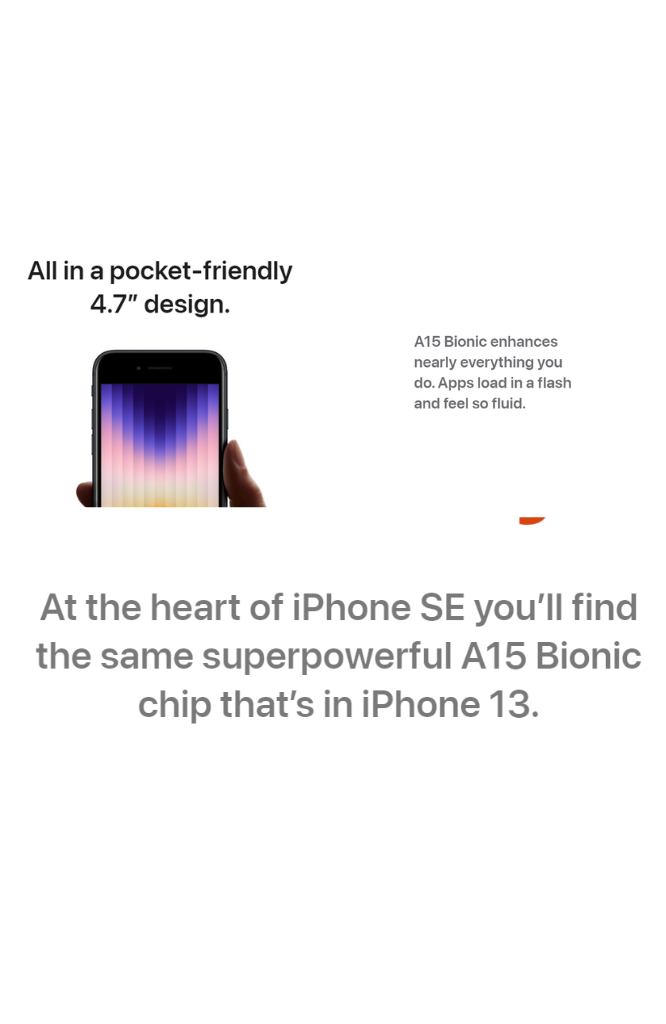Hello again fellow writers!!! Do you feel your product descriptions are uninspiring?
In the case of selling your products online, penning a perfect description for those products is always key.
Actually, product descriptions are among the main factors of success in the online store since they serve as the crucial links between a customer and a product.
Now, let’s find out what would be the most powerful factors to include into a product descriptions.
Let’s face it darling
As everyone knows, writing product descriptions is frankly very challenging. When you want to promote your product, you have to make sure that it looks appealing, with focus on every interesting aspect, that it is targeted to the desired audience.
But it is here that businesses face yet another challenge which is getting the audience to pay attention to your product in the middle of so many others.
That is why the main areas to focus on are product descriptions, as we have seen in the article.
and the question arise why product descriptions are so Important
Here are just a few reasons why product descriptions matter:
Accurate product descriptions build trust
If you offer a straightforward description of your product, your customer has no reason not to trust you, thus, fewer returns and refund cases.
Product descriptions drive conversions
Clearly, if a product description is well done, it can change customer’s perception and cause them to purchase more leading to improved sales.
Product descriptions improve SEO
When you use specific keywords from the search phrases in your product descriptions, your website will rank higher in the search engine result pages.

What to expect from this Article?
In this article, we shall, therefore, discuss appropriately how to write convincing product descriptions to make more sales.
In this guide, you will learn the basic facets to incorporate in any product description, product descriptions writing tips and practices, and samples of successful product descriptions for you to apply to your own online sell site.
The Problem with Boring Product Descriptions
Let’s face it: yes, that’s right, you know that writing product descriptions can be as exciting as watching paint dry, or more accurately, as boring as watching paint fail to dry without help.
That is why after some time, the company and the selling team ends up repeating itself, boring its target clients, and hence achieving low results.
But the thing is, boring product descriptions are not just some minor inconvenience they directly influence your sales and customers.
Well then, is there anything we can do wrong that will result in unimpressive product descriptions?
Here are a few:
no 1# Using overly technical jargon
Seriously, who among us is a techie guy? It feels off-putting and confusing when you speak in technical terms your customers will not grasp.
no 2# Focusing too much on features
While features can help set you apart, it doesn’t have to be the ultimate deciding factor. Here is something that most people fail to realize: your customers want to be told, in no ambiguous terms, how your product is going to impact them.
no 3# Not using social proof
Customers’ technical recommendations can be a very effective strategy as people tend to believe others like them. But if you don’t it is recommended, to try it out you’re missing out.
no 4# Not optimizing for SEO
Your product descriptions are an excellent place that you can integrate some keywords or phrases that are useful in the search engine. If one is not doing SEO, they are missing a lot of potential for the product descriptions that they have.
Now let’s see what happens if you make these mistakes.
Well, here are a few consequences of boring product descriptions:
- Low sales: If print media description of the product is not interesting, one can never be pushed to purchase the product. It’s that simple.
- High bounce rates: If your product descriptions are weak then your customer will leave your site and go somewhere else. It seems that I must say, is the final agreement; once the items are lost, they are lost forever.
- Poor customer engagement: If your consumers wouldn’t bother to share or post nice comments about your work/ description, for example, on Facebook if they weren’t interested in it……………….
Here are some scary statistics to drive the point home:
Product Description is important or very important for the product purchased according to 85% of customers.
(Source: HubSpot)
(Source: comScore)
According to the customers, 63% of them preferred to do business with a site that provides adequate product descriptions.
(Source: BrightLocal)
According to the survey, 55% of customers believe that they trust the site containing the customer reviews and ratings.
As you would agree, monotonous and uninspiring product descriptions are not something that should be taken lightly – they present a genuine threat to your enterprise.
But, do not panic, we’ll explain what mistakes you make and how to avoid them Let’s move on to discussing the proper product descriptions that work!
Click here for more information.
The Anatomy of a Great Product Description
But, what did we learn about what makes a product descriptions great? When and how can you turn the utilities, in your customers’ eyes, from “meh” to “must-have”?
Let’s break it down:
Discovering the Key Components of a Great Product Descriptions
A good product descriptions can be compared with the recipe of success and this is quite true in one way or another.
The ingredients must be right, combined in right proportion so that when you take the food it will be appealing and equally healthy for you.
Here are the essential elements of a compelling product description:
A clear and concise headline
It should be simple and to the point and best of all it should be so good that your customer thinks ‘okay this person really knows what they are talking about and they’re worth my attention’.
A detailed and accurate description
This is where you get to do what you’ve been waiting for, educate your customer on the various features and aspects of your product. Be correct in what you are conveying among the learners and be comprehensive.
Social proof
This is a good place to convince your customer that there are other people who are using the same product. Customer testimonials and reviews, and rating system are powerful tools which can be used to gain customer trust.
A clear call-to-action
This is where you have to guide your customer on what to do next. Be concise, and also be explicit.
High-quality images
This is where you the customer get to see the physical appearance of your product. Your images also have to be clear, and they have to be related to the context in which they are placed.
Click here to know everything about how to make money by freelance writing.
examples of effective product descriptions
Well, what does it look like when the above fundamental elements are applied, here is what the following section seeks to answer.
Here are a few examples of effective product descriptions:
Example 1: Warby Parker
Looking at Warby Parker’s navigational menu and actually reading through their product descriptions, which are refreshing. They read fast, they read smart, and they are exceedingly personality-packed.
Here’s an example:
here is the example of product description: Introducing the Barkley Sunglasses

- It is the best example which is in Detailed, concise, and visually appealing.
- It effectively highlights the key features and benefits of the Barkley sunglasses, making it easy for readers to understand the product’s value proposition.
- The use of simple language, concise paragraphs, and a clear structure make it easy to read and understand.
- The description also effectively uses sensory language to appeal to the reader’s senses, such as the description of the Azure Crystal color as “a soft, serene blue that’s reminiscent of a clear summer sky”.
Example 2: Patagonia
I could dedicate an entire paper to how the words used in the Patagonia’s product descriptions make me love the environment all over again.
They are enthusiastic, they educate, and they’re detailed.
Here’s an example:
Here is the description for the product: this is a product description for the Patagonia ROC Essential Hoodie

- This product description is a good example of how to use concise and descriptive language to sell a product.
- It highlights the key features of the hoodie, such as its cozy and casual design, and provides a clear idea of what the product looks like and how it can be worn.
Example 3: Apple
The way Apple presents its products is do irresistible to the eyes and ears, it may as well be a work of art itself.
and yes, They are stylish, they’re stunning, and they are loaded with style.
Here’s an example: iPhone SE

- This is a good example of how a description can be Clear, concise, and engaging.
- It effectively highlights the key features and benefits of the iPhone SE, making it easy for readers to understand the product’s value proposition.
- The use of simple language, concise paragraphs, and a clear structure make it easy to read and understand.
As you can see, these product descriptions are all different, but they all have one thing in common: they’re effective.
They are simple, they are brief, and perhaps most importantly they’re interesting. And that is what you should strive for while writing your own product descriptions.
Product description is crucial in determining its sate and it rules in writing the artificial product descriptions.
Well, that means these are the basic things every budding marketer interested in crafting an irresistible product descriptions should know.
How to Write Product Descriptions that Sell
Now, let us discuss more detailed, how to write product descriptions that work and make the sales grow. Here are some tips to get you started:
Tips for Writing Engaging and Persuasive Product Descriptions
Know your audience
To put pen to paper you should identify your target audience. What are their pain points? their goals? and What motivates them to buy?
Use storytelling techniques
They will help you better communicate with your audience and make the product more familiar to them. People are used to lengthy descriptions and it would be wise to recommend using stories, comparisons with other things and description of the appearance and the feel of your product.
Focus on benefits, not features
Normally when describing your product, you should avoid a lit of features but rather try to influence the benefits of the product. How will it improve your customer’s life? In this case, therefore, the reader has to ask his or herself how it will solve their problems.
Use social proof
To refresh your memory social proof is among the most efficient ways to establish trust and credibility within your audience base. It is also possible to employ the usage of current customer satisfaction indicators such as testifiers, reviews and ratings.
Keep it concise
Just as a reminder, your product descriptions ought to be brief, clear and to the point. Ideally, your bio should be under 150 – 200 words long, you should also use the bullet points and short paragraphs in order not to flood the reader with too much of the text at once.
The Role of Storytelling and Emotional Connection in Product Descriptions
There are few factors that are guaranteed to increase your product description’s persuasiveness and people’s engagement, and those are stories and emotions.
Here’s why:
No 1# Storytelling creates emotional connection
When you tell a story, you establish rapport with your audience – the physical and psychological link is not the same.
You make them feel something, whether it be happiness, the desire to relive childhood memories through Pacman, or have sympathy for a criminal who needs to make the ‘right’ choice.
No 2# Emotional connection drives sales
A densely motivated audience is one that has an affirmative emotional association with your product; such an audience will purchase.
This is because people are more likely to feel like they want to be part of your company rather that buying your product.
No 3# Storytelling makes your product more relatable
Storytelling adds more appeal to your product and makes it appear as though it has some humanity to it.
It demonstrates to the target audience that your product is not an accumulation of features and advantages but a solution to the client’s problem.
Here’s an example of a product descriptions that uses storytelling and emotional connection:
“Meet Sarah, a busy working mom who’s always on-the-go. She needs a coffee maker that’s fast, reliable, and easy to use. That’s why she loves our coffee maker – it’s the perfect solution for her busy lifestyle. With its advanced features and sleek design, our coffee maker is the perfect addition to any kitchen. And with its affordable price point, it’s a purchase that won’t break the bank.”
As you can also tell, this form of product descriptions appeals to emotions and identifies with the reader. It demonstrates a number of things, but largely it proves that the product is not just a set of attributes and advantages, but an answer to a need.
The Power of Storytelling in Product Descriptions
Perhaps the most effective way of ensuring your audience will relate with your product is by using storytelling.
Stories sell because when you tell a story, you’re making an emotional appeal to your audience.
Here are some tips for incorporating storytelling into your product descriptions:
Step 1# Use anecdotes
Bring your personal experience and share the story, or take of a customer who will tell about the advantages of using your product.
Step 2# Use metaphors
Try to use metaphors when they’ll help you make your product stick in the minds of your audience.
Step 3# Use vivid language
Use descriptive language to paint a picture of your product and its benefits.
Step 4# Create a narrative
Go into detail about the product and come up with a story that people will be able to relate to the product by; where did it originate from? why may it be the best product in the market? what sets it apart from the rest of the products that are in the market?
Emotional Component in Products’ Description
Emotional appeal is always an important element in creating the description for a certain product.
From my perspective, setting an emotional tone to your audience is the best way to earn their trust and be credible and that’s where sales comes from.
Here are some tips for creating an emotional connection with your audience:
Step 1# Use emotional language
Employ terms that elicit people’s sentiments including but not limited to; fantastic, impressive, incredible, and transformational.
Step 2# Use sensory language
To convince your audience, it is wise to use a lot of descriptors for the product and the experiences that are sure to be associated with it.
Step 3# Use social proof
Employ references from the customer base as evidence to endorse the company’s activities.
Step 4# Create a sense of urgency
Use limited time offers or things which are scarce to create a need of its own.
How to write a product description? Best examples to follow
Here are a few examples of effective storytelling in product descriptions:
Example 1: Warby Parker
The key to a Warby Parker product descriptions is Warby Parker’s use of storytelling . They tell stories, make associations, and paint pictures to popularize whatever they are marketing.
Example 2: Patagonia
Another good example of the appealing narrative at Patagonia is their product descriptions. They appeal to people’s feelings, to their visual imagery, and to examples of other people who can see the value of their products.
Example 3: Apple
First, Apple is an ideal example of how storytelling can be used in descriptions of products. Consumers employ descriptive language, figures of speech, and existential pressure to tell a story about their products.
If you add storytelling and emotional appeal into the traditional persuasive product descriptions, your audience will be more interested in your products.
Remember to use anecdotes, metaphors, vivid language, and social proof to create a narrative around your product, and to build trust and credibility with your audience.
Optimizing Product Descriptions for SEO
Anything that needs to be highlighted on any given product needs to be done, in a smart way to make the product descriptions perfectly respond to the SEO queries, whether it be for commercial purpose or personal reason.
Having walked you through what makes good product descriptions let’s discuss how to ensure the copy is search friendly.
All the same, what good is the fabulous product descriptions, if none of the customers will ever see it?
How to Optimize Product Descriptions for Search Engines
Optimizing your product descriptions for search engines is a crucial step in getting your products found online.
Here are some tips to help you get started:
no 1# Use relevant keywords
In this case, it is advisable that you choose the keywords you wish to use from those which are relevant to your product and which your target group of customers is likely to use. It will assist your product description appear in SERPs once a customer searches for those keywords.
no 2# Use long-tail keywords
Long-tail keywords are phrases that are more detailed but attracted fewer users each month but are also easier to rank on. It means that you can increase the visibility of certain long-tail keywords in SERP.
no 3# Use keyword research tools
You can then visit Google Keyword Planner, Ahrefs or SEMrush, among others, to get more of the right keyword phrases for your product descriptions.
no 4# Use header tags
Include header tags in your product description as it makes the page more scannable and effective to use keywords that are used in the tag.
no 5# Use meta descriptions
They should be used to briefly describe your product description and persuade consumers to visit your product page.
Keyword Research and Use Commendations
Here are some best practices to keep in mind when conducting keyword research and using keywords in your product descriptions:
Use keywords naturally
Ensure you incorporate your keywords well when writing product description but do not overdo it by repeating your keyword severally.
Use synonyms and variations
Additional phrases and mirrors, or variations of, your target keywords help to make your product description more diverse.
Use keywords in Context
Use keywords in context, rather than just listing them out. This will be useful when writing your product description in order to prevent you from or stuffing your content with many keywords.
Use keyword density
To see how often your keywords appear in the product description, consider utilising the keyword density tool.
In this case, it is recommended that you do not exceed 1 to 2 % for your keyword density to avoid keyword density.
examples of optimized product descriptions
Here are a few examples of optimized product descriptions:
Example 1: REI
Product descriptions used for the search engine have resulted in the creation of long-tail keywords and phrases to match customer searches.
Example 2: Sephora
One of Sephora’s key SEO strategies is properly defining its product descriptions: keywords and phrases to attract the customer searches.
By writing optimized product descriptions, you are likely to gain better exposure on your product, more clicks to the product page and ultimately more sales.
As a beginner, ensure you incorporate keywords into your posts, Long-tail keywords to outline, and keyword research tools to use.
Conclusion
So, there you have it – the lowdown on crafting product descriptions that actually drive sales.
It’s time to ditch those boring, generic descriptions and start writing copy that resonates with your customers.
Remember, your product description is often the first impression customers have of your product, so make it count.
Use storytelling techniques, highlight the benefits and unique features of your product, and optimize for SEO to increase your visibility.
And don’t forget to keep it concise, clear, and compelling – you want to make it easy for customers to understand what your product is and why they need it.
By following these tips, you can create product descriptions that convert browsers into buyers and drive sales for your business.
So, what are you waiting for? Get started today and start crafting product descriptions that sell!
FAQs
What does a product description do?
The role of a product description is to allow customers to gain simple and straightforward knowledge of your product, its functions, and utility.
What characteristics should be present when writing a product description?
The length of the product description may also vary depending on a number of factors, but this often ranges and should not be an approximately ten-paragraph piece of text. The label should be brief, preferably 150-200 words long.
What should not be missing in a product descriptions?
The basic components that should be included in a well-done product description include headline, description of the product, a list of other buyers, and the place where a customer is being invited to purchase the item.
What is the best way of implementing SEO into my product descriptions?
To enhance visibility of your product descriptions in search engines, use keywords and phrases, encapsulate headlines in header tags and work on meta descriptions.
Can the same product descriptions be used for two or more products?
Do not use the same product descriptions when describing different products; it is useful for different products. Every single product description should be unique and as such, should be written for the product in question.
How often should I update my product descriptions?
The reason to provide frequent attention to and adjustments in stores is that it is ideal to overview and amend product descriptions. By doing this it becomes possible to better satisfy customers hence increasing their uptake of the products.
Is it possible to cross sell or to increase the order by using product descriptions?
Of course, product descriptions can be a perfect tool for an upsell and cross-sell strategy. This way you can persuade the Customers to buy more related products through the provision of information on their benefits and differentiation factors.
What should I do in order to determine whether my product descriptions are effective or not?
To determine the success of your product descriptions, you should look at the various trends like conversions, the number of sales and customers satisfaction. This information can then be utilised to update and modify the product descriptions as necessary continually.



